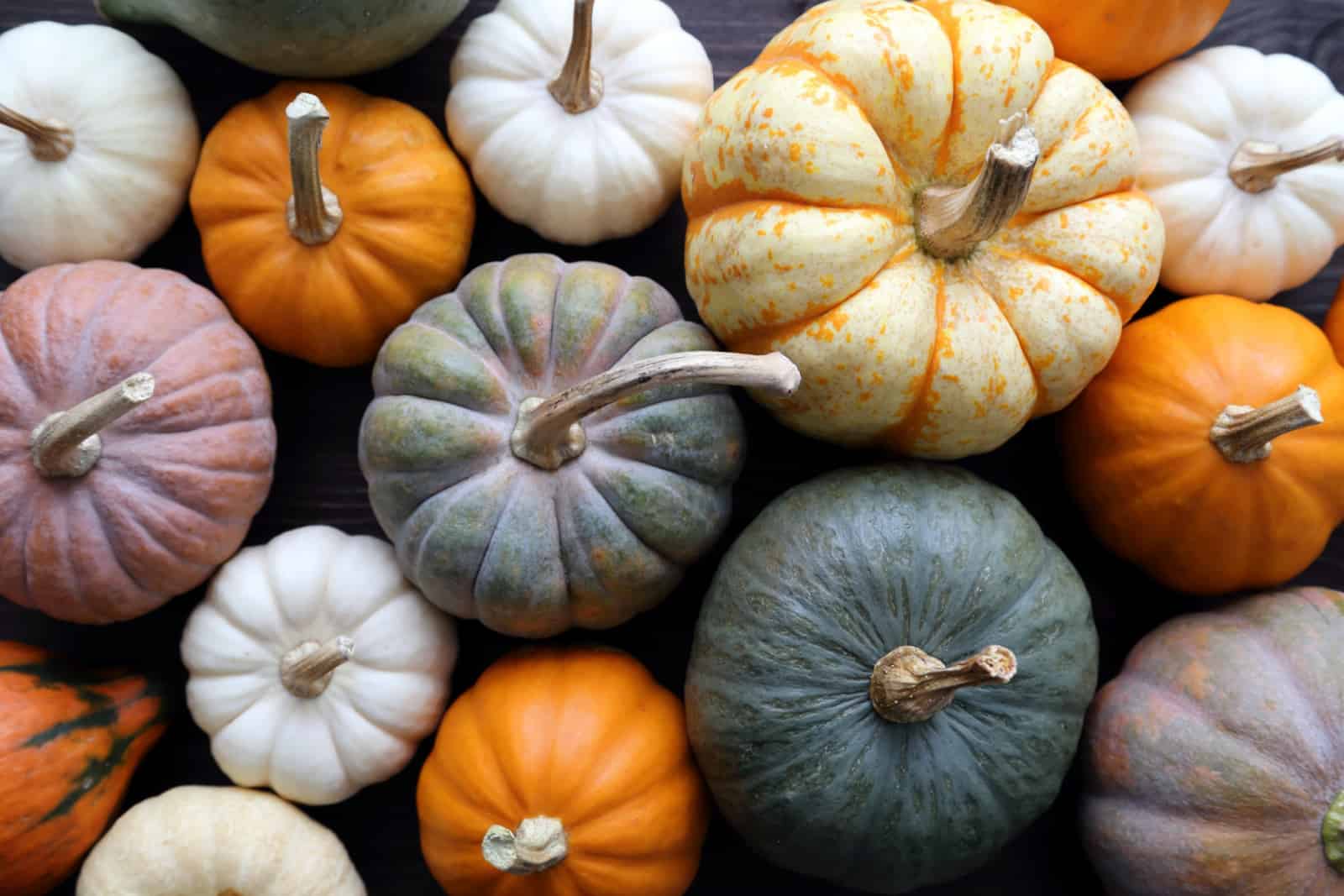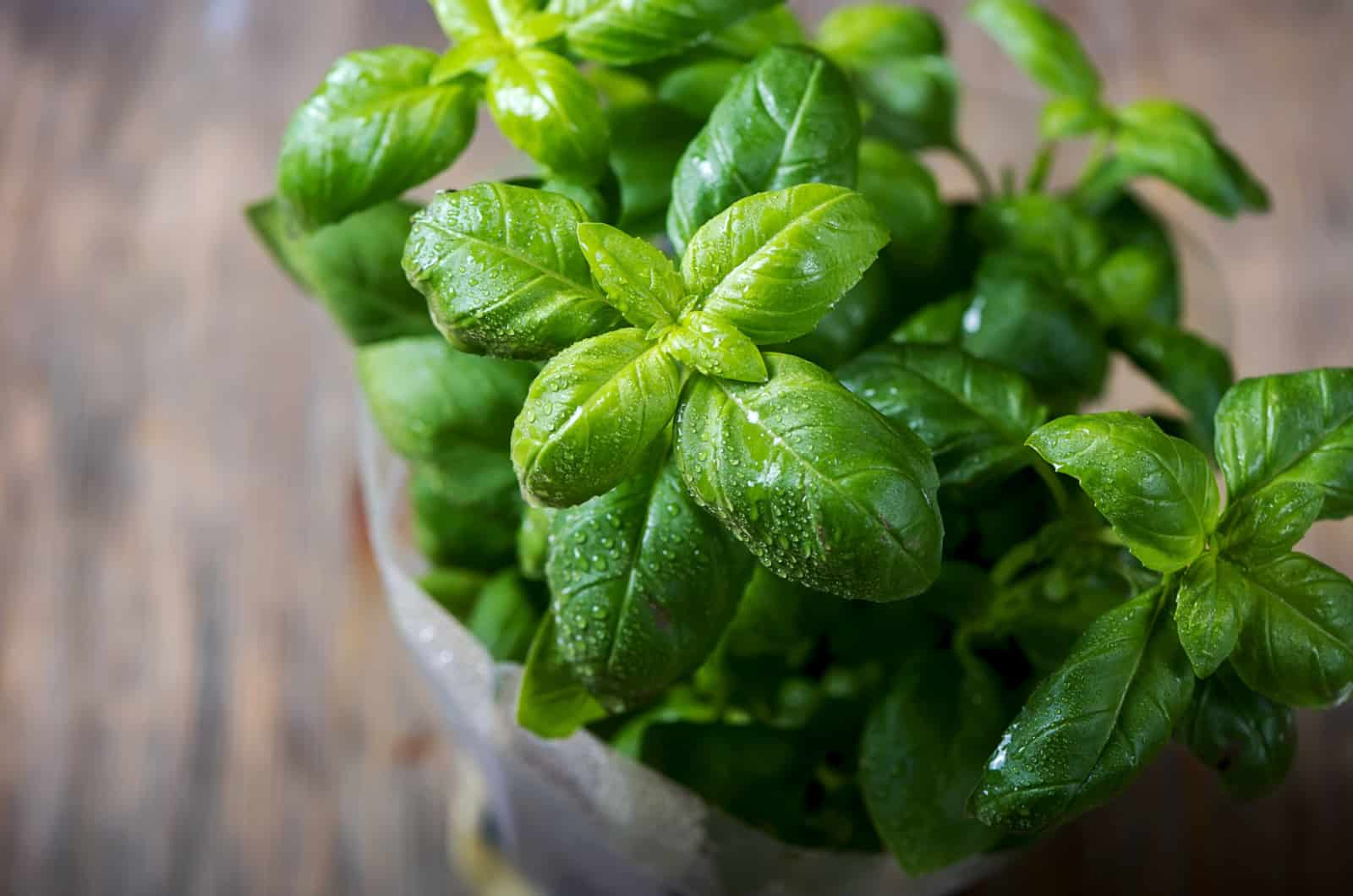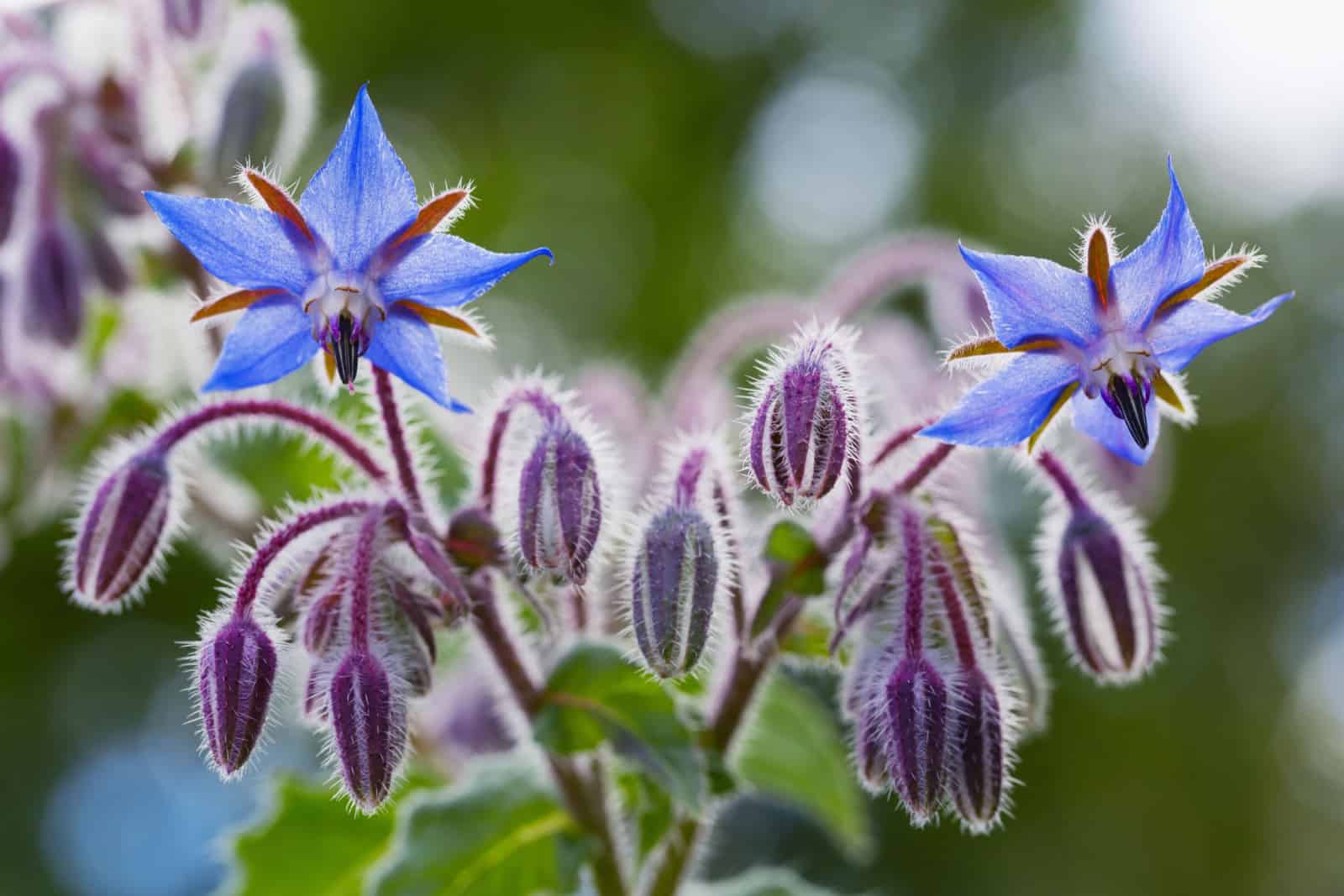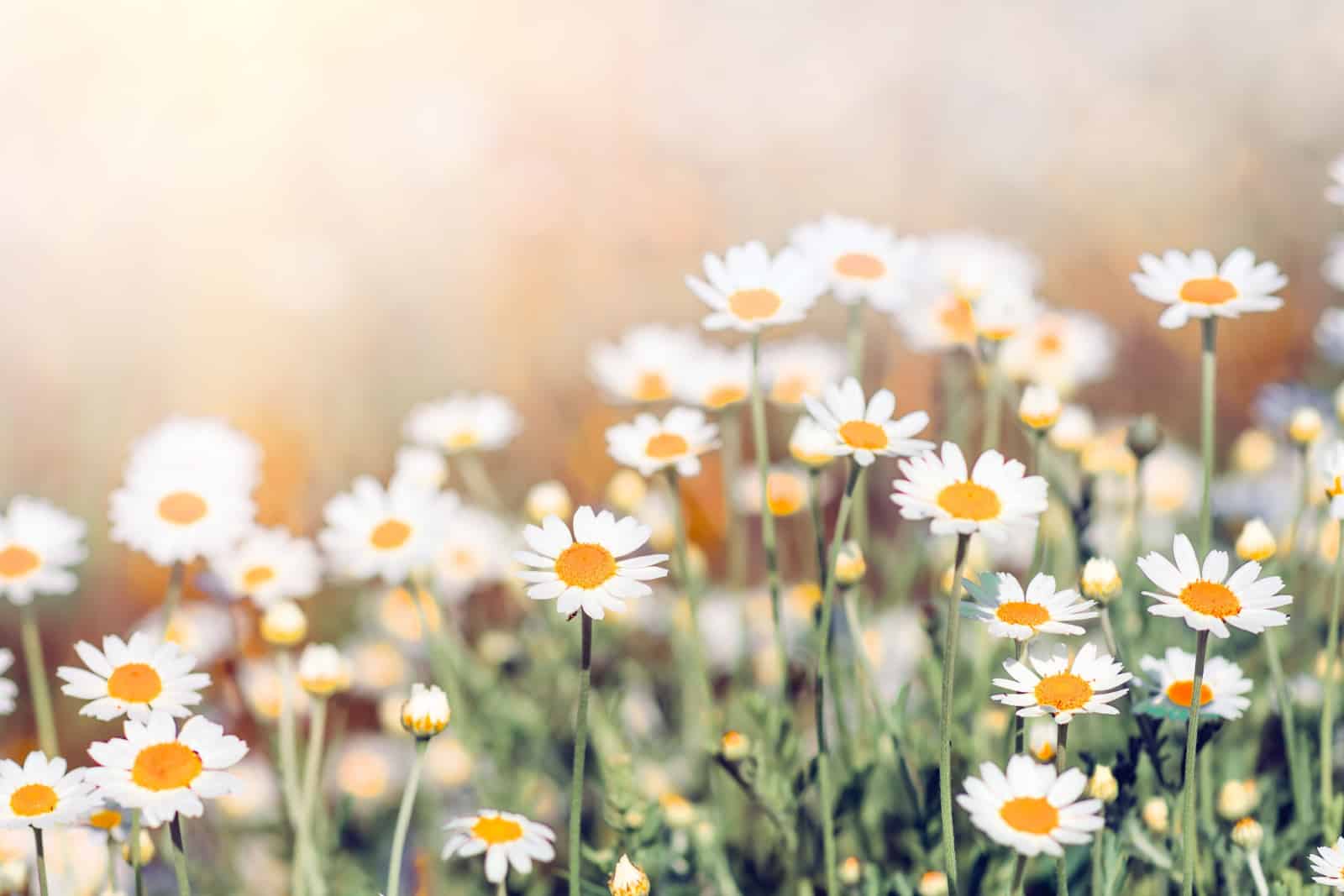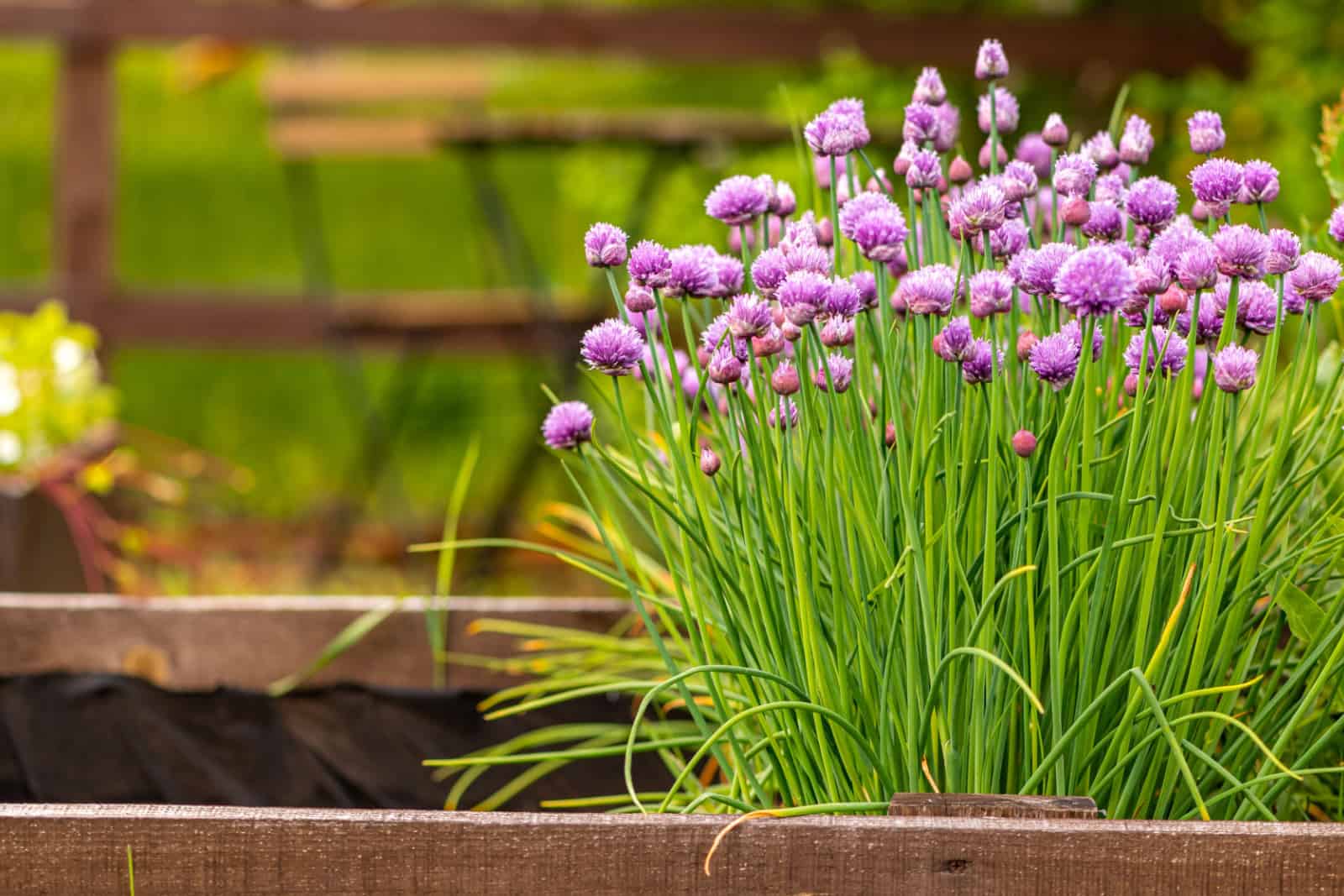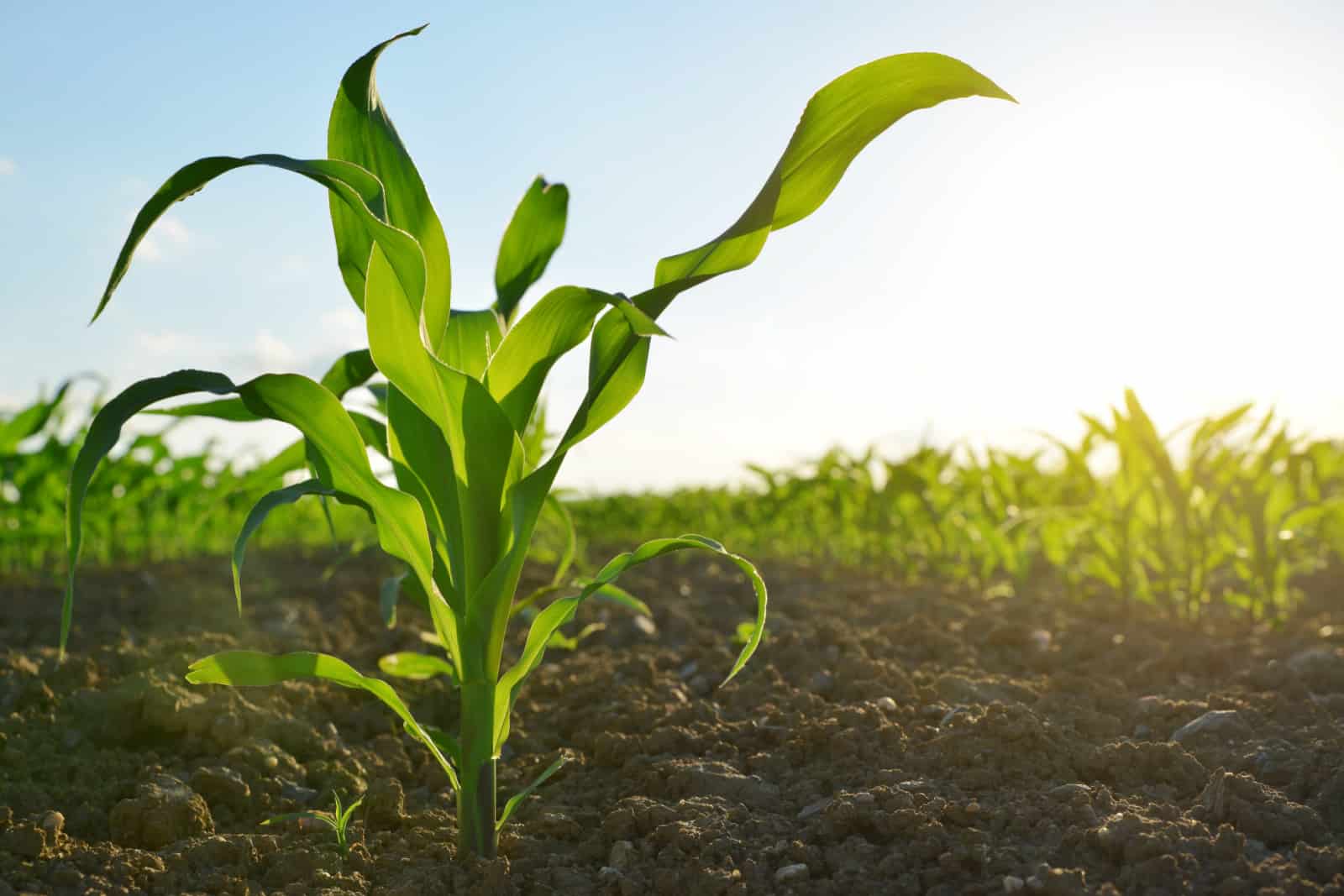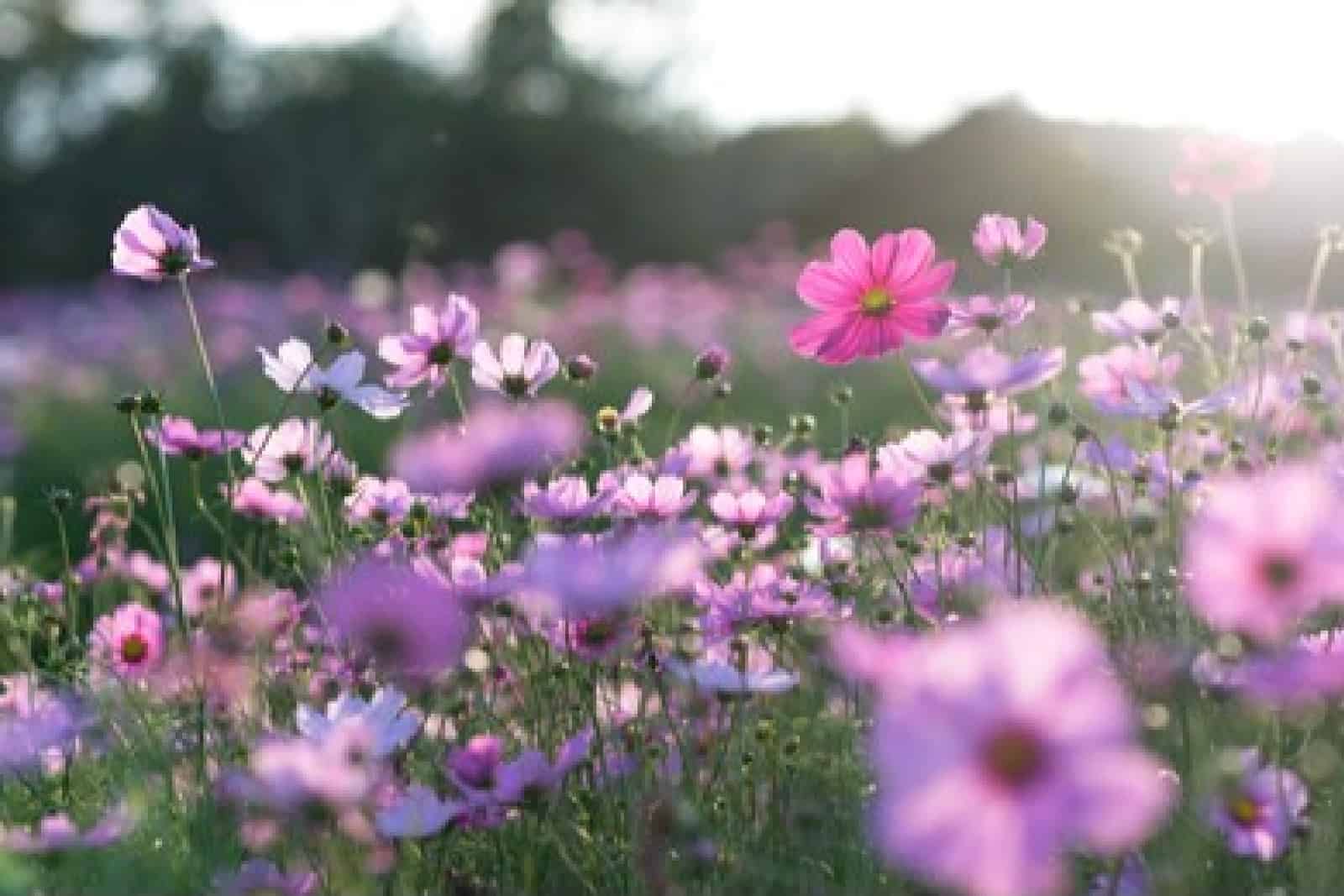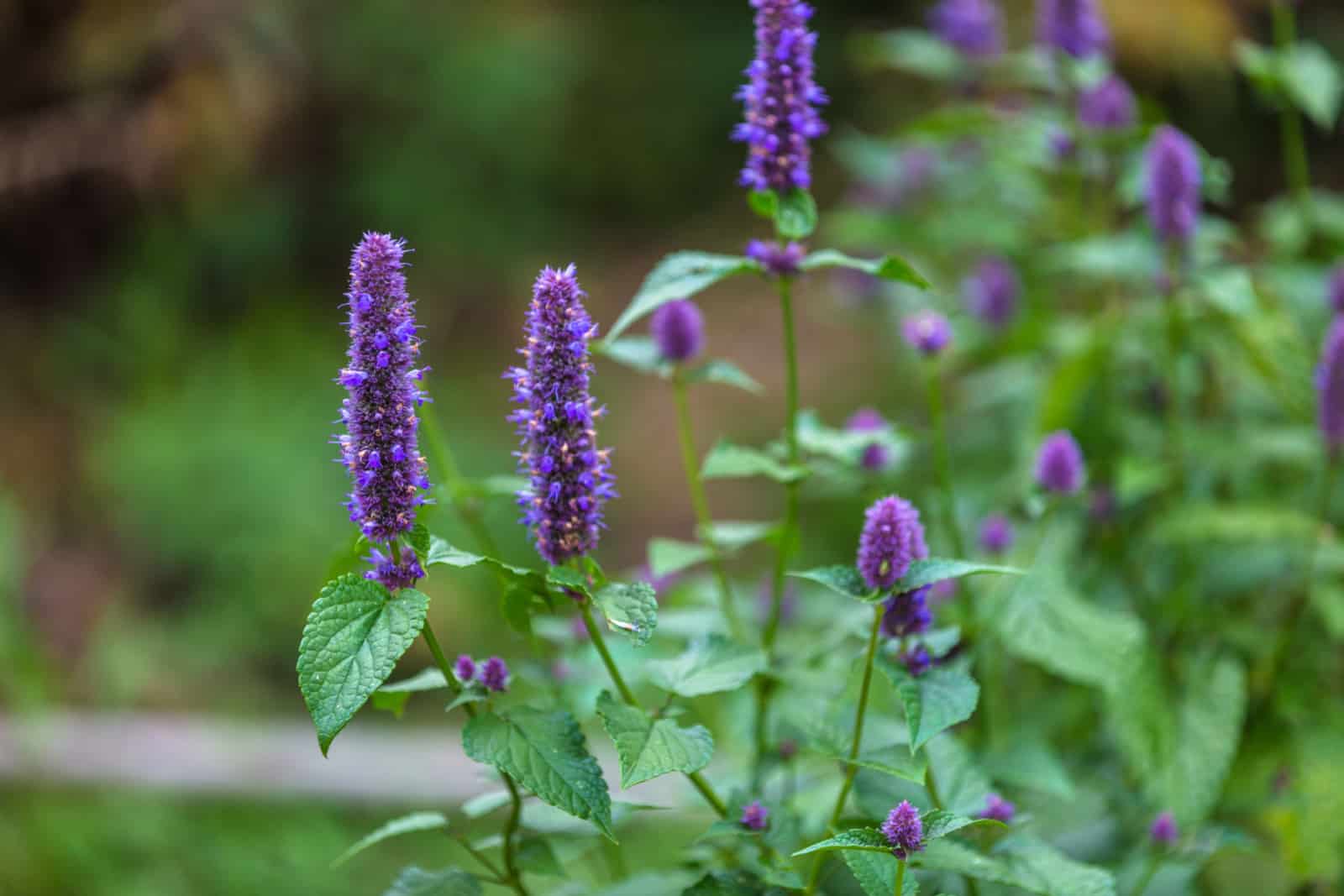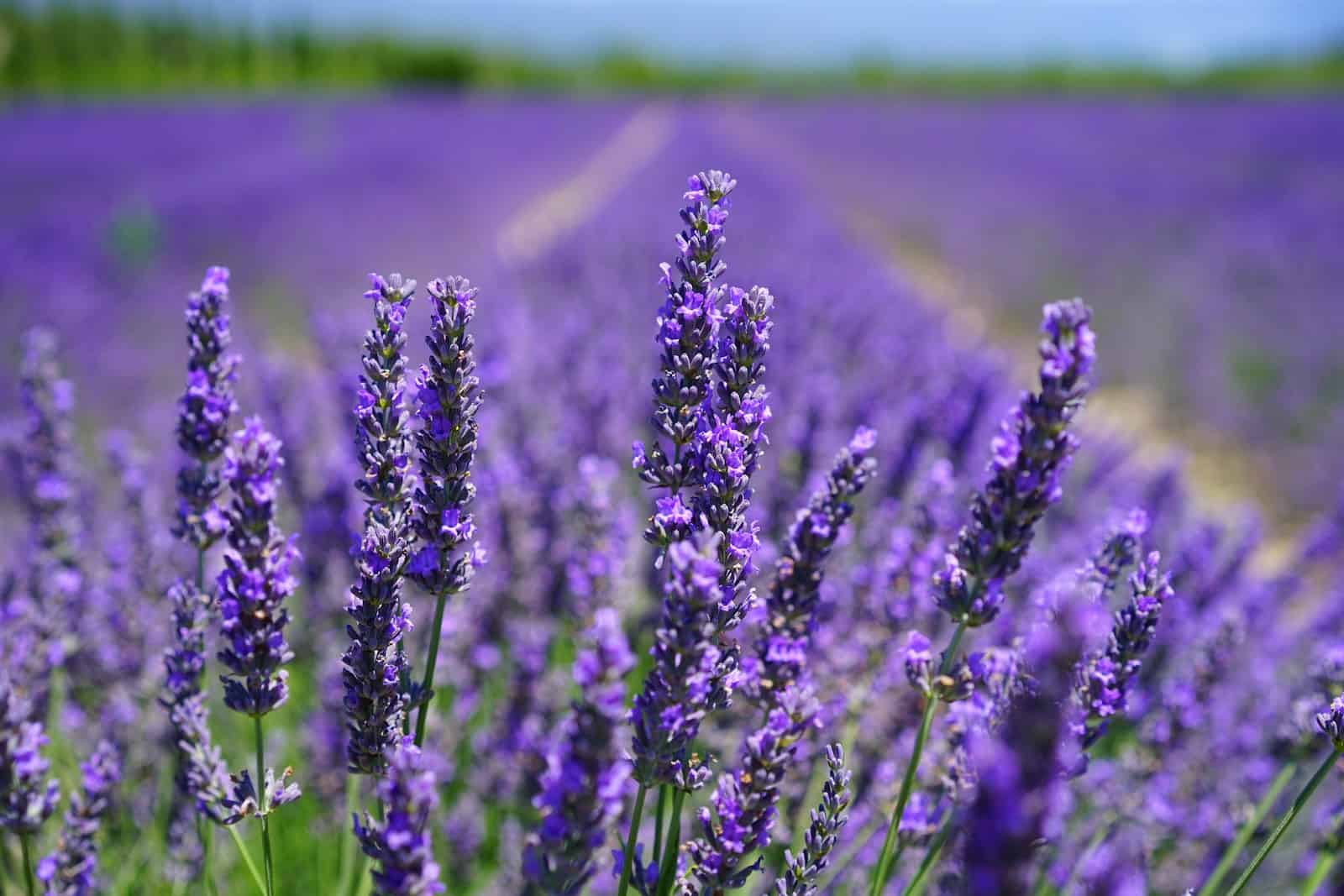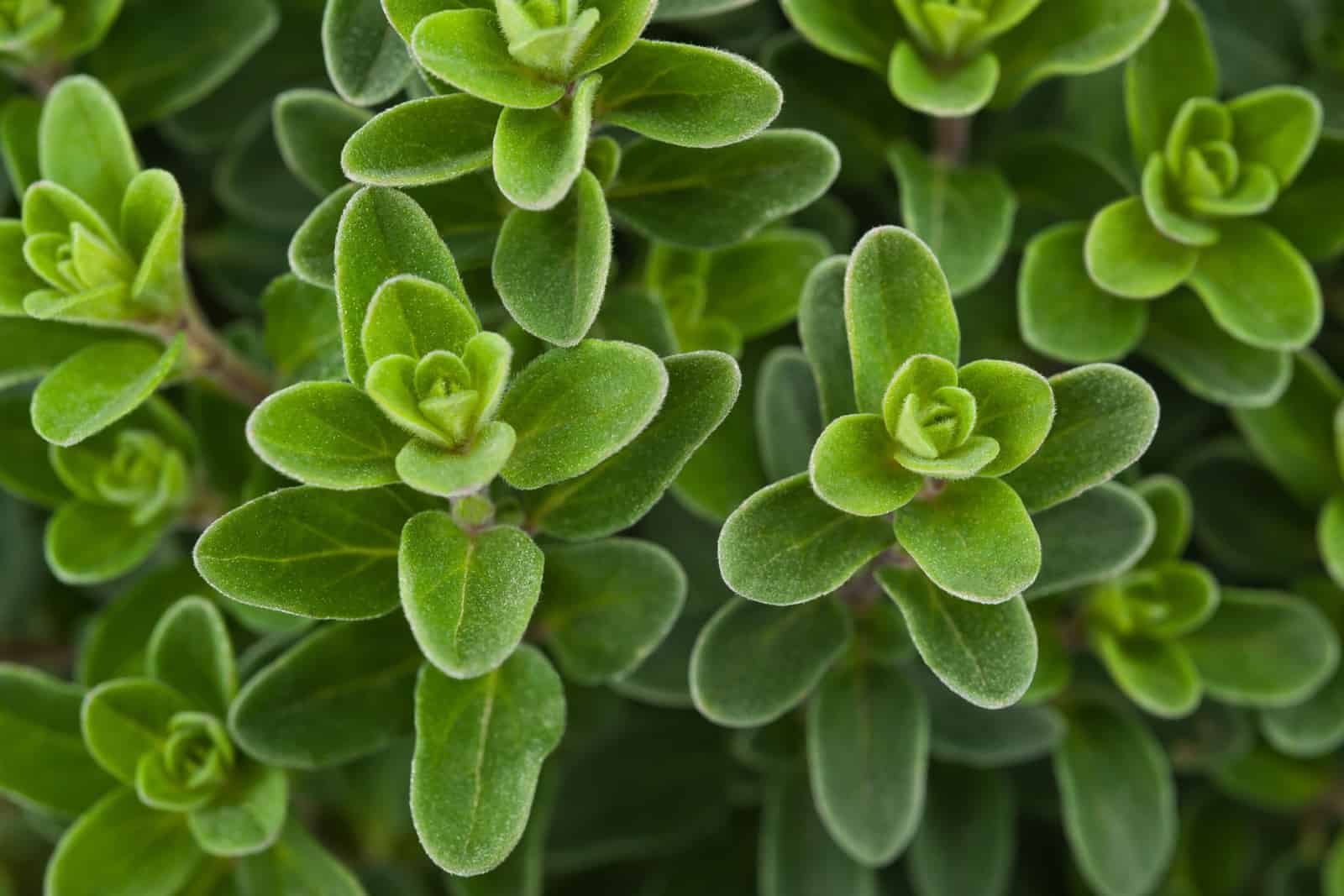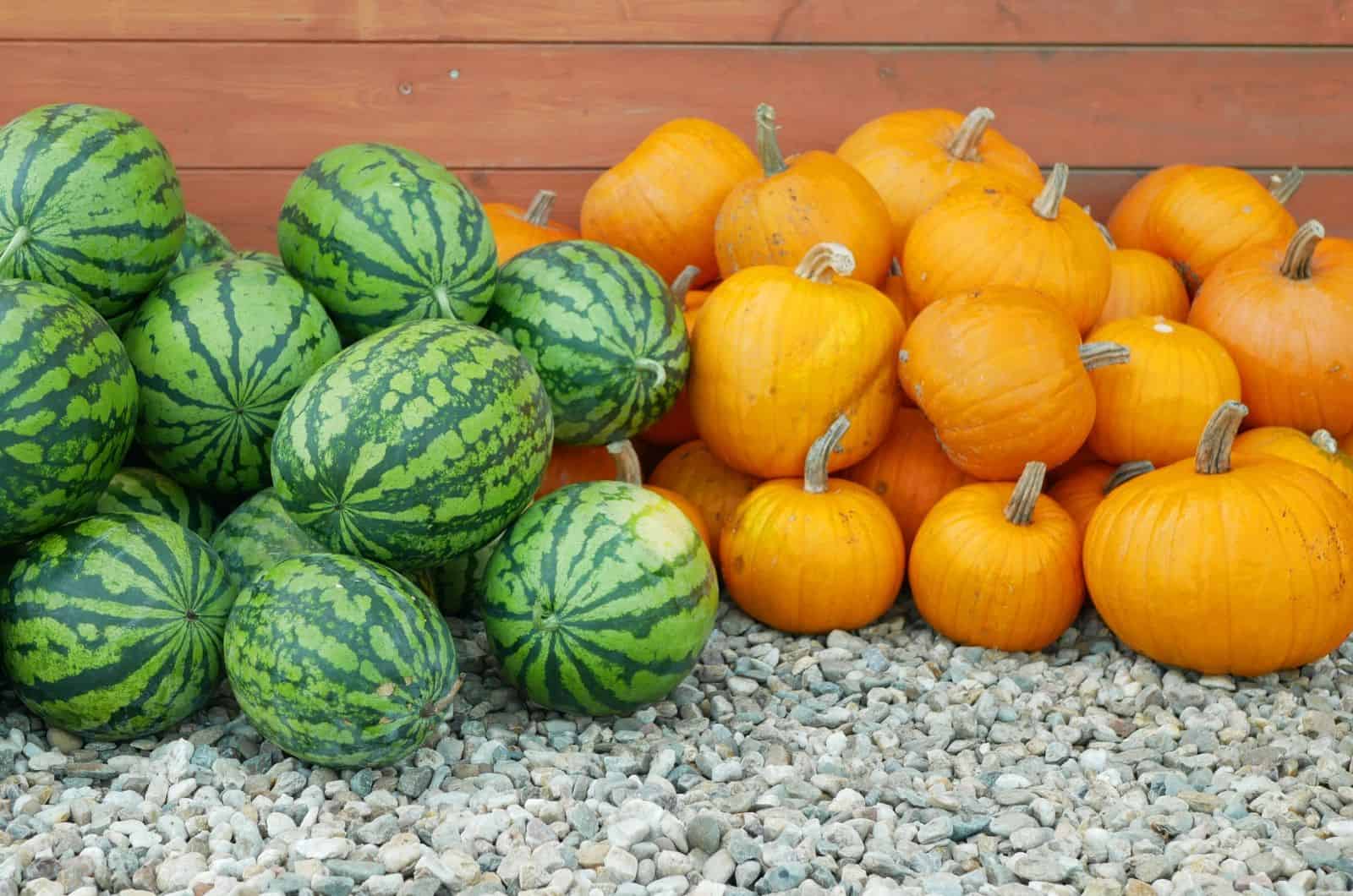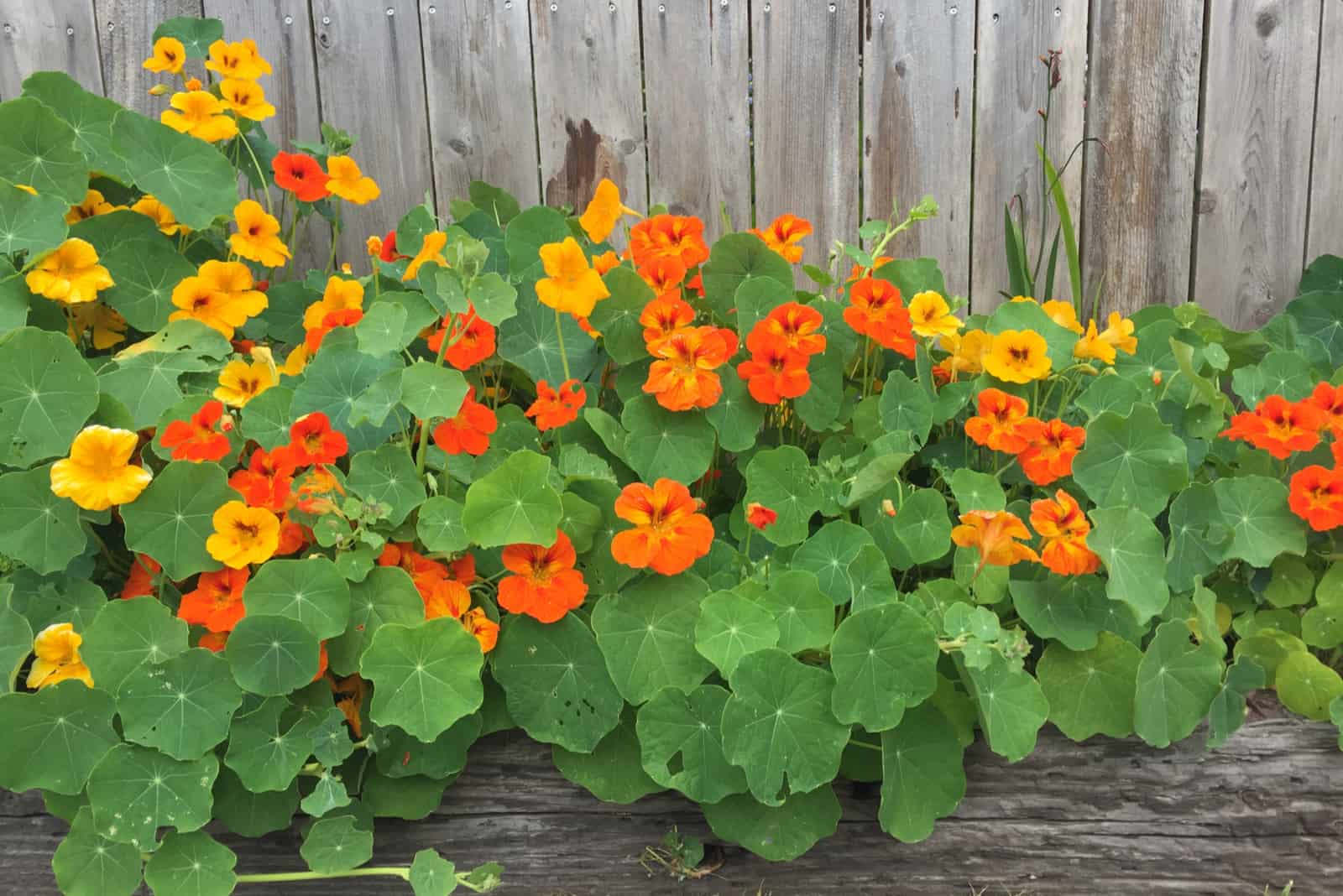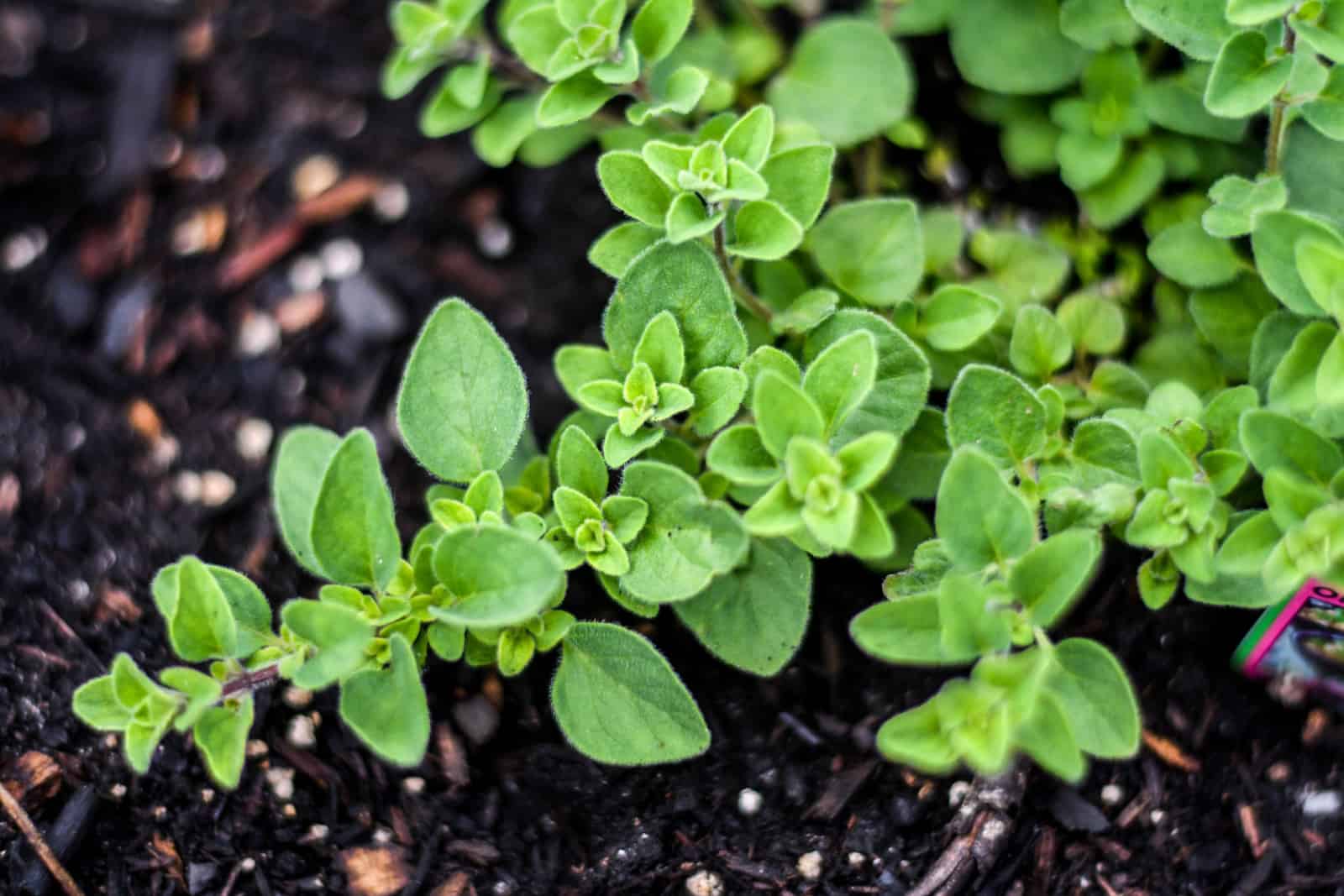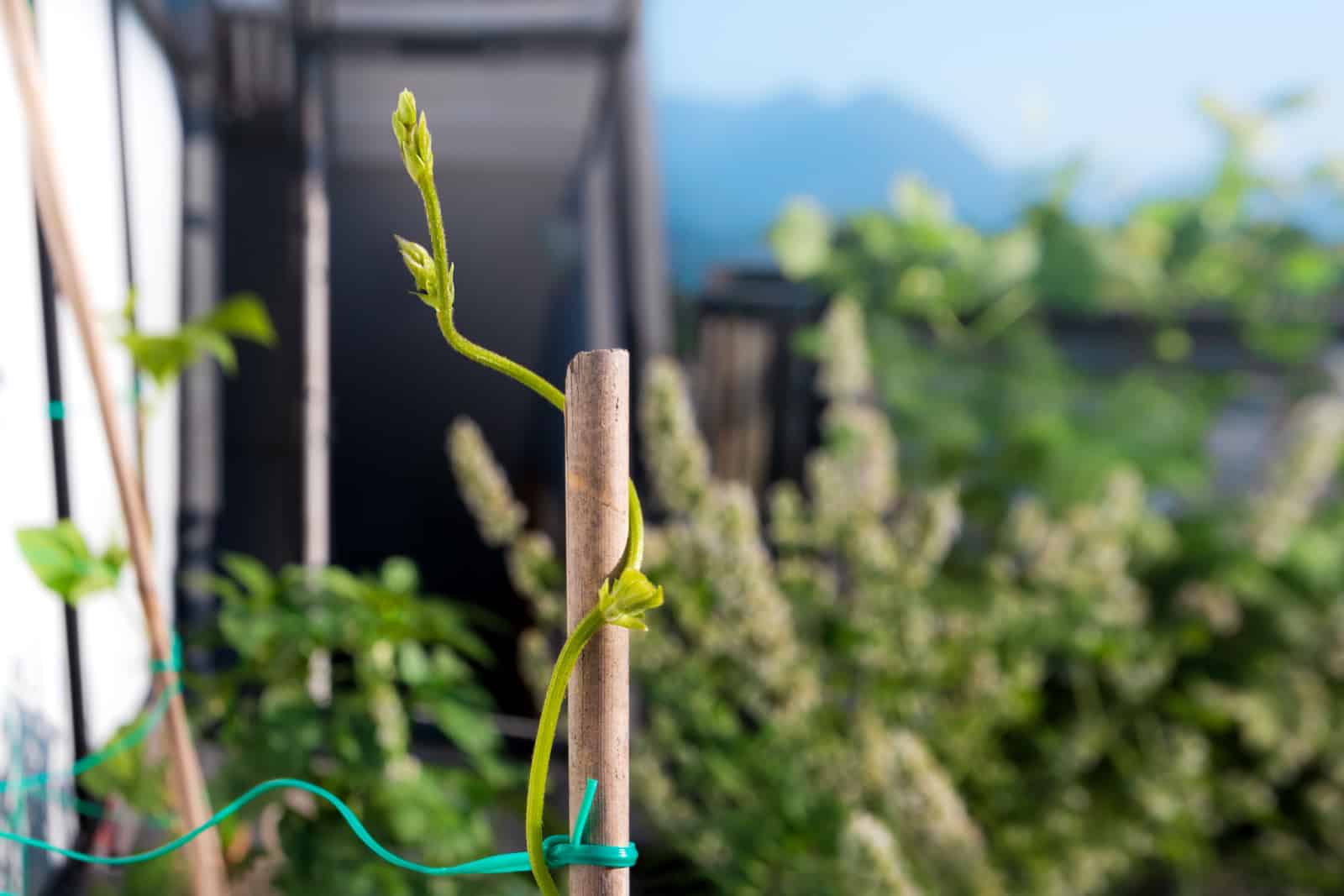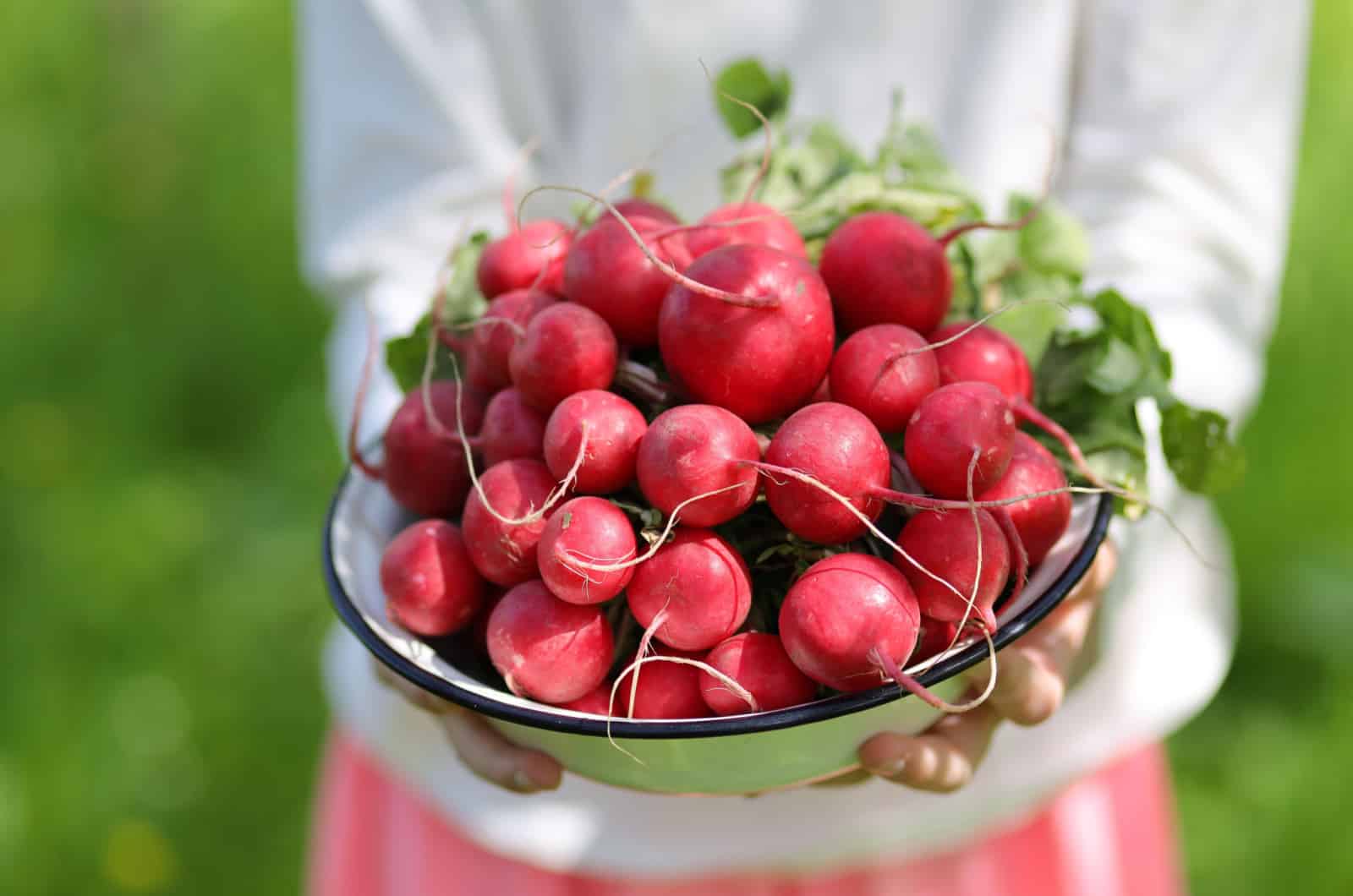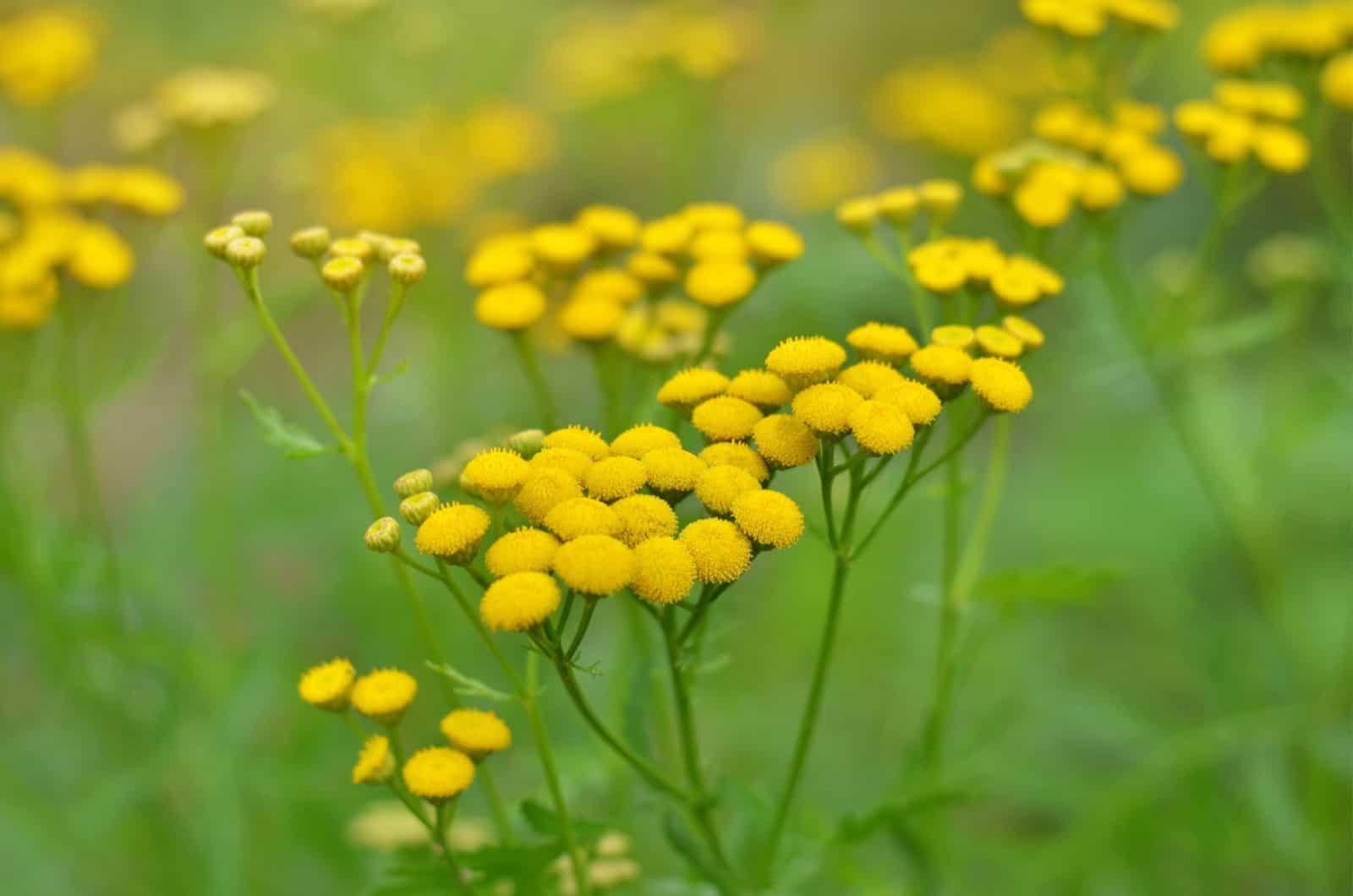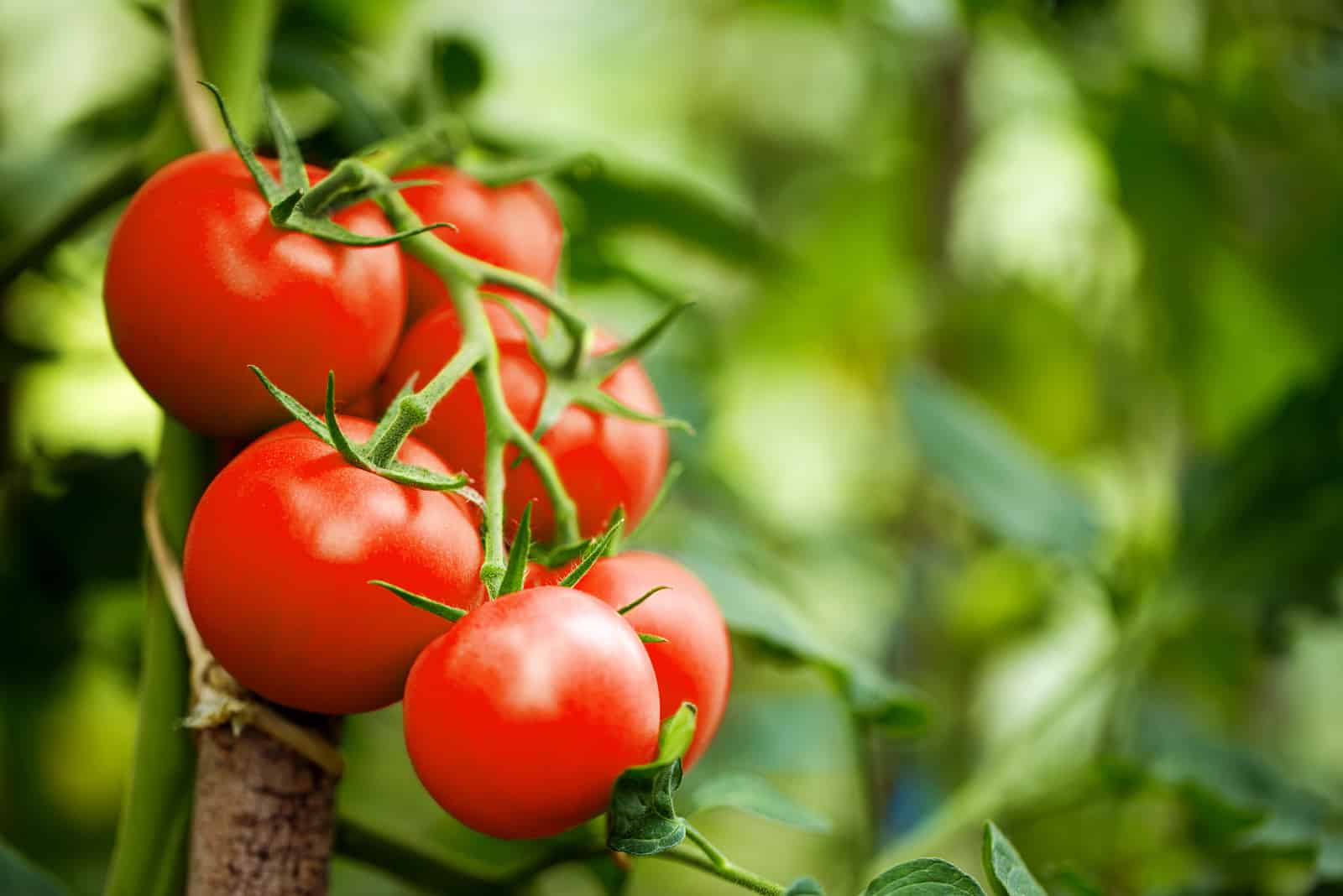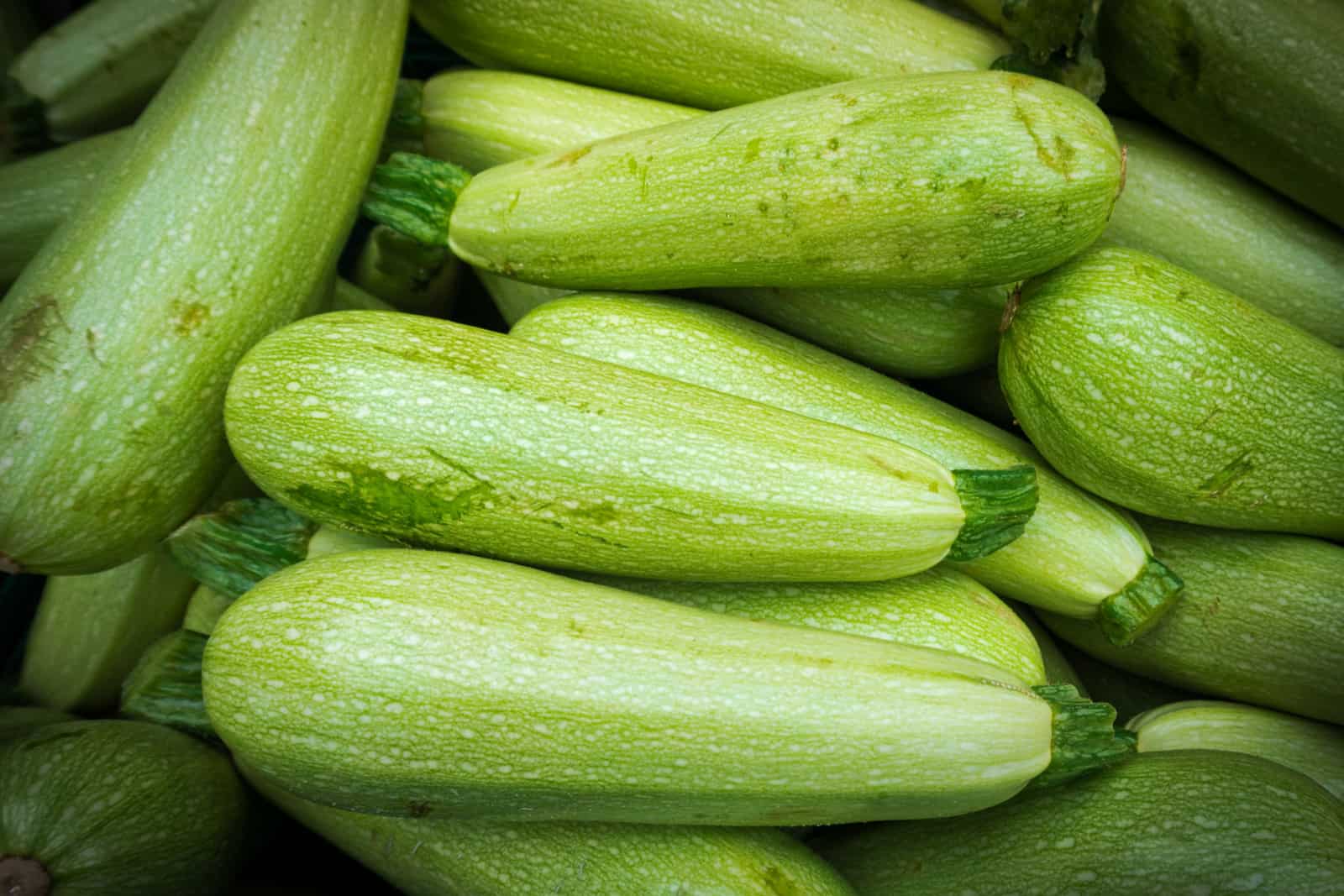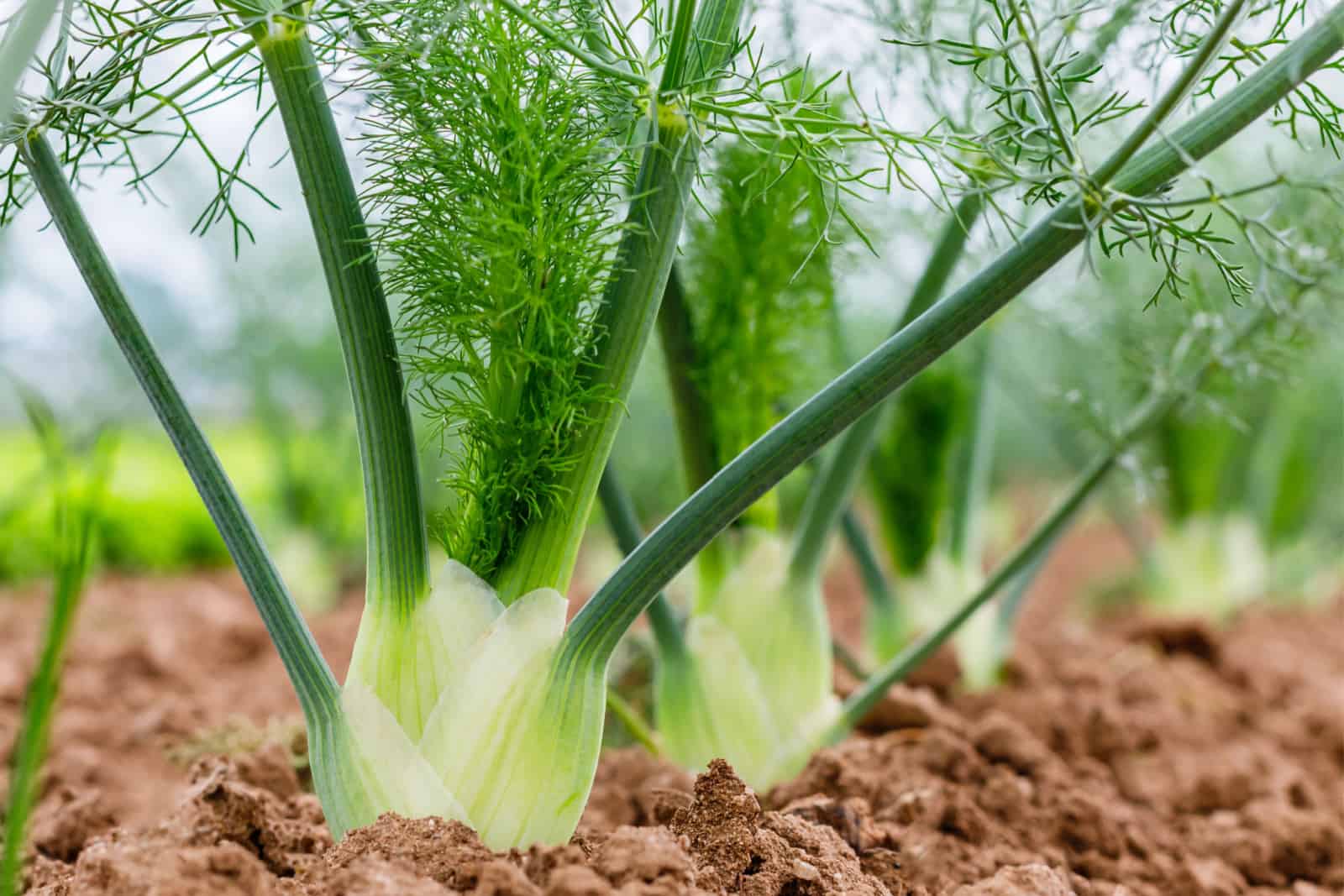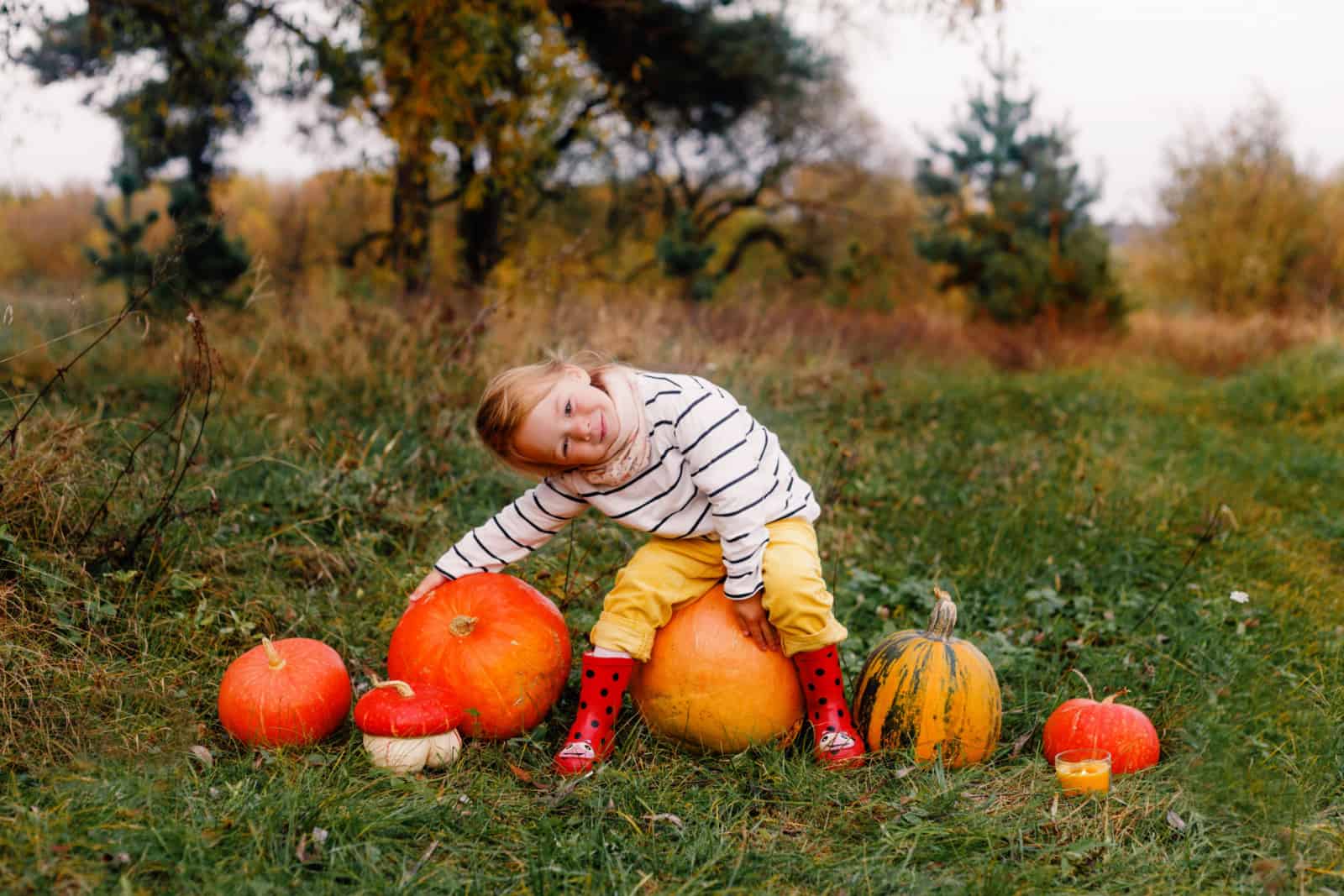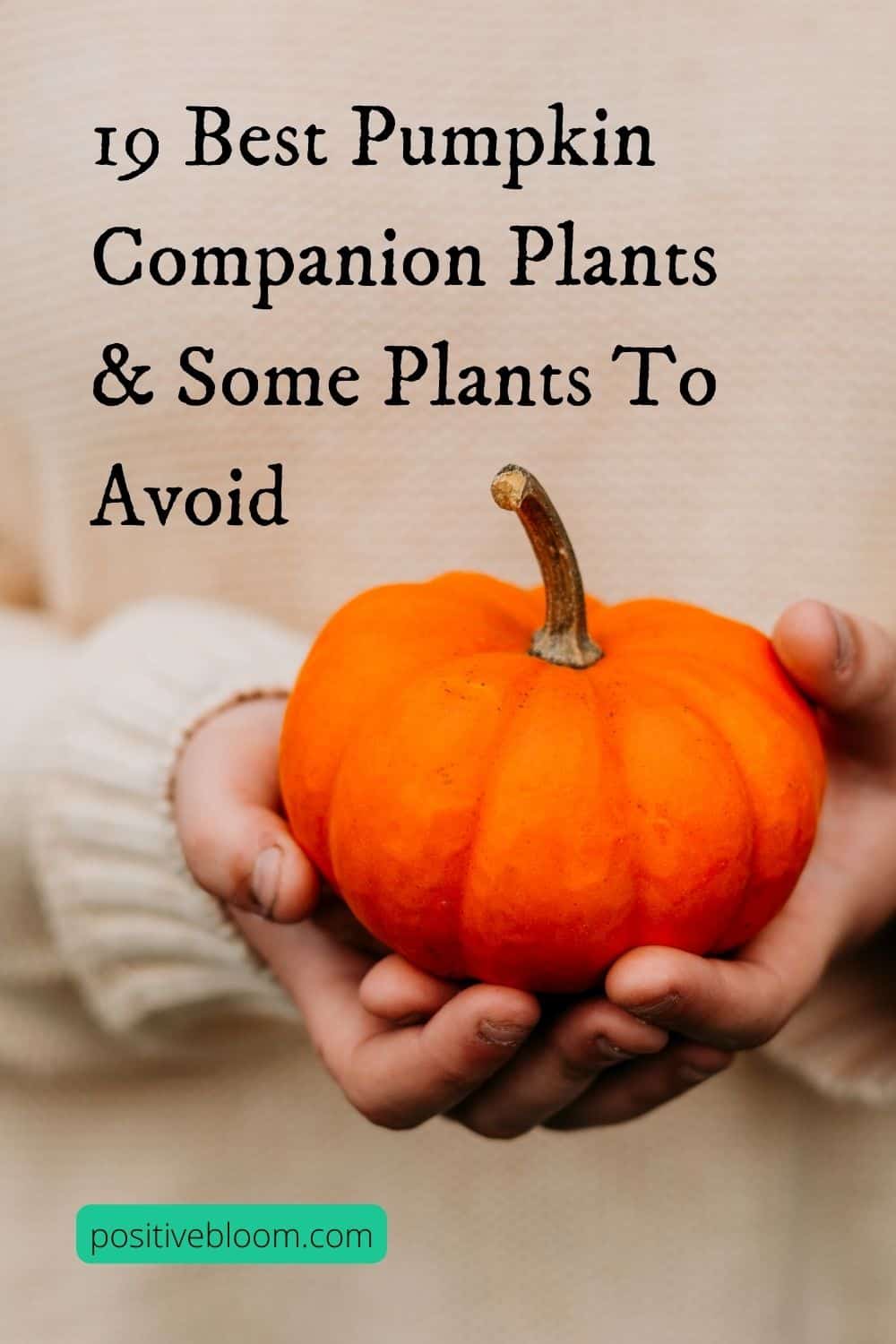Companion planting has many benefits, including attracting pollinators and other beneficial insects, repelling pests, improving flavor and growth, etc.
And the good news is that you can grow almost all veggies this way!
This article will primarily focus on the best pumpkin companion plants and their benefits, such as certain herbs, marigolds, sunflowers, radishes, etc. We’ll also talk about certain plants you should avoid when growing this vegetable.
The Best Pumpkin Companion Plants
It’s always helpful to know how many pumpkins your plant will produce so that you can get a better grasp of the space you have left for other veggies.
And once you’ve calculated where you can plant these companions, it is time to choose which to grow.
You can choose between a myriad of herbs, flowers, and vegetables, and we bring you the 19 most common ones.
Let’s begin!
1. Basil
Planting basil alongside pumpkins in your vegetable garden can help you repel many insects without using any pest control.
This herb can deter flea beetles that feed on your pumpkin leaves. They are especially dangerous to seedlings and young plants as they can stunt their growth or even kill them if the infestation gets out of control.
2. Borage
The main benefit of planting borage near your pumpkin patch is that it attracts beneficial insects such as bees and wasps.
These insects are natural enemies of cabbage worms, which may attack your pumpkins as well. Bees and wasps are also excellent pollinators, so planting borage can increase your yield.
3. Chamomile
Chamomile is an aromatic and fragrant herb that is an excellent insect-repellent, including pumpkin pests.
This plant can deter squash bugs and cucumber beetles, which can frequently infest your pumpkin crop. And the worst thing is that they can remain hidden for a long time before you notice them crawling around your vegetables.
The strong fragrance of chamomile will disguise the scent of pumpkins, and the beetles won’t be able to find it.
Although, you should learn to distinguish between chamomile and feverfew since these two herbs are alike but don’t have the same benefits.
4. Chives
Chives are another fragrant herb that can protect your pumpkins from cucumber beetles.
You can also let it flower to attract pollinators, so you can forget about small yields and unpollinated pumpkin plants with chives!
5. Corn
Corn, pumpkins, and pole beans are often planted together, and they make up the so-called three-sisters method.
Native Americans introduced colonials to this technique, which has benefits for all three vegetables.
Pumpkin vines serve as a ground cover, and they inhibit the growth of weeds. Corn stalks serve as a stake or a trellis to pole beans, while the beans are responsible for nitrogen fixation in the soil.
If you want to try out the three sisters method, find a location with full sun conditions that gets at least six hours of light each day, and create small mounds where you’ll plant the veggies.
First, plant the corn, and once it’s about six inches tall, you can plant pumpkins and pole beans to climb up the stalks.
Here are some more tips for planting the three sisters:
6. Cosmos
Cosmos flowers attract pollinators such as bees and hoverflies, without which your yield wouldn’t be as bountiful.
Hoverflies are also excellent at preventing pest infestations because their larvae feed on aphids, mealybugs, spider mites, etc.
7. Korean Licorice Mint
The blue flowers of Korean licorice mint are almost irresistible to hoverflies and make a perfect companion to your pumpkins.
Hoverflies pollinate the blossoms and lay eggs which turn into larvae and feed on detrimental insects such as mealybugs, aphids, etc.
This plant is also tolerant to high temperatures, so you can grow it in hotter climates as well.
8. Lavender
Lavender is another aromatic herb that attracts many pollinators to home gardens, including bees, bumblebees, etc.
Its strong fragrance repels many pests, including aphids, deer, fleas, mosquitoes, etc.
Lavender is a good pumpkin companion because it doesn’t require much care, and you can always grow it in a planter to make the growing conditions perfect for both plants.
It is even possible to grow lavender in Florida as there are special cultivars that can thrive in these weather conditions.
9. Marigolds
Marigolds are one of our favorite pumpkin companion plants as they can repel many insects, including potato and squash bugs, root-knot nematodes, aphids, Mexican bean beetles, etc., and they look fabulous while doing so.
If you want them to deter nematodes, you have to plant marigolds as a monoculture. These insects can sense toxicity and will run away from them if possible, hurting your pumpkins’ roots even more.
Plant marigolds where you had a large root-knot nematode infestation, and then plant the pumpkins there the following season.
10. Marjoram
This aromatic herb has attractive flowers that are irresistible to many pollinators. But that’s not the only reason gardeners grow this plant with their pumpkins.
It is said that marjoram can improve the flavor of pumpkins (and their other companions), so planting some marjoram seeds between the vines can be incredibly beneficial.
11. Melons
You can benefit from planting melons and pumpkins together because they have similar growing requirements.
They also attract pollinators that can increase the yield of both crops.
12. Nasturtiums
One of the main advantages of planting nasturtium and pumpkins together is that this orange flower reduces squash bug attacks.
It can also attract ladybugs that feed on other pumpkin pests, such as aphids, mealybugs, cucumber beetles, etc.
Nasturtiums can also serve as a trap crop and draw these insects away from your pumpkins and sacrifice themselves.
And if you have a few flowers left, you can always use them to decorate your meals!
13. Oregano
Oregano is a perfect companion to many plants, and one of them is pumpkins. This herb can deter squash bugs due to its fragrance and keep your orange veggies safe.
Oregano also attracts pollinators, which are necessary for large pumpkin harvests.
14. Pole Beans
We already talked a bit about the importance of pole beans in the three sisters method, and now we’ll discuss their significance to the pumpkin.
Pole beans are necessary for nitrogen fixation, or rather converting nitrogen from the air into the form plants can use.
Pumpkins benefit from this nutrient during their vegetative growth stage, which is when they develop vines and foliage.
15. Radishes
This vegetable is typically used as a trap crop because it attracts pests like flea beetles away from pumpkins.
It matures quite quickly, and you can harvest it before pumpkin vines require more room to spread.
16. Sunflowers
One of the main benefits of sunflowers is that they attract pollinators due to the copious amounts of nectar they produce.
However, they can also act as a trellis in the three sisters method, so you can use them instead of or alongside corn stalks.
This gorgeous flower can also be used as a trap crop to keep pests away from your pumpkins.
17. Tansy
This herb keeps many pumpkin pests at bay, including squash bugs. It also attracts beneficial insects that feed on other nuisances.
Yellow tansy flowers are alluring to pollinators, and you can increase your harvest by planting a couple of seeds around your vegetable garden.
18. Tomatoes
Tomatoes are another vegetable to grow as a sacrificial plant that will keep your pumpkins safe.
You can also use this crop in the three sisters method as they vine up the trellis, while pumpkins provide them all the benefits of mulch.
However, both pumpkins and tomatoes have extensive root systems, so you should plant them at least 24 inches apart (if not more).
19. Zucchini
Squash vine borers attack plants from the Cucurbit family, and if you really love pumpkins, you can plant other members, like zucchini, to serve as a trap crop.
This vegetable also attracts squash bees into your home garden (just like pumpkins). These insects will ensure that all your flowers are pollinated and increase your yield.
And if you need lots of pumpkins for Thanksgiving dinner or Halloween, understanding the average pumpkin weight of different varieties can help you make all the soups, cakes, gnocchis, stews, purees, lattes, and decorations you need!
Worst Plants To Grow Near Pumpkins
Just like there are the best pumpkin companion plants, there also exist the worst plants you can grow near these veggies.
These usually include root vegetables, brassicas, and cucurbits, but some herbs, such as fennel, are also a lousy companion choice.
We’ll discuss the reasons behind their incompatibility in the following sections.
Root Vegetables
Potatoes, beets, onions, and carrots have large roots, which can hinder the growth of pumpkins and even damage their root system once you start harvesting them.
Pumpkins have shallow roots, and as you start digging for potatoes and pulling carrots out, you might accidentally cause injury to your veg.
Root crops are generally light feeders, but if there are too many of them around your pumpkins, they can deplete the soil of nutrients.
Fennel
Fennel is another plant that you should avoid planting near pumpkins because it emits a certain substance that can inhibit the growth of other vegetables.
However, it may attract many pollinators and other beneficial insects, so you can still plant it as a border plant near your garden.
Brassicas
Gardeners avoid planting brassicas and pumpkins together because they are both heavy feeders and can quickly deplete the soil of all nutrients.
If you grow these varieties together, neither of them will thrive.
You can always plant them separately and enjoy a nice salad with your pumpkin chili or lasagna roll-ups!
Other Cucurbits
All cucurbits are heavy feeders, so planting them in the same box can hinder their growth.
But there’s another reason we avoid planting members of this family together.
Cucurbits may cross-pollinate, so if you want to save the pure heirloom seeds, avoid planting cucumbers, squash, zucchini, melons, etc., together.
FAQ
There are a few things to be answered about pumpkins in general, and we’ll discuss them in the following sections.
What is the best way to plant pumpkins?
Space the pumpkin plants 4-8 feet apart, and plant them on mounds where they can get full sunlight. You can plant pumpkins once all danger of frost has passed.
If you don’t know the last frost date in your region, you can plant this vegetable once the soil temperature is around 65°F.
Finally, understanding the growing stages of pumpkin plants can help you nurture healthy vegetables and increase your yield.
Will pumpkins choke out other plants?
Pumpkins are avid growers, and they can choke out other cucurbits such as squash, melons, zucchinis, etc.
All these plants fight for space, moisture, nutrients, and sunlight, and their growth will be significantly stunted if you grow them in the same box.
Final Thoughts
We brought you 19 excellent pumpkin companion plants you can incorporate into your vegetable garden and reap their benefits.
Some attract pollinators, others invite beneficial insects that feed on pests, while some simply exude a fragrance that bugs cannot handle. You can use companions as trap crops or to increase the flavor of your pumpkins.
There are also plants, such as brassicas, fennel, and root vegetables, that you shouldn’t plant near your pumpkins as they can stunt their growth.
Happy planting, and until next time!
Like this post? Share or pin it for later!

